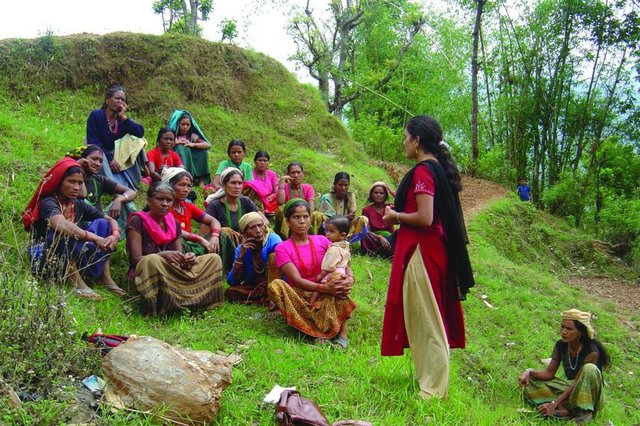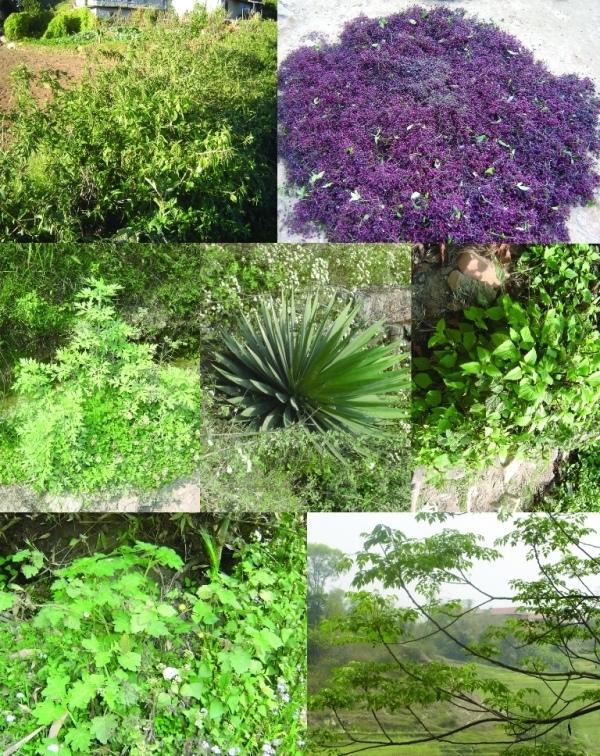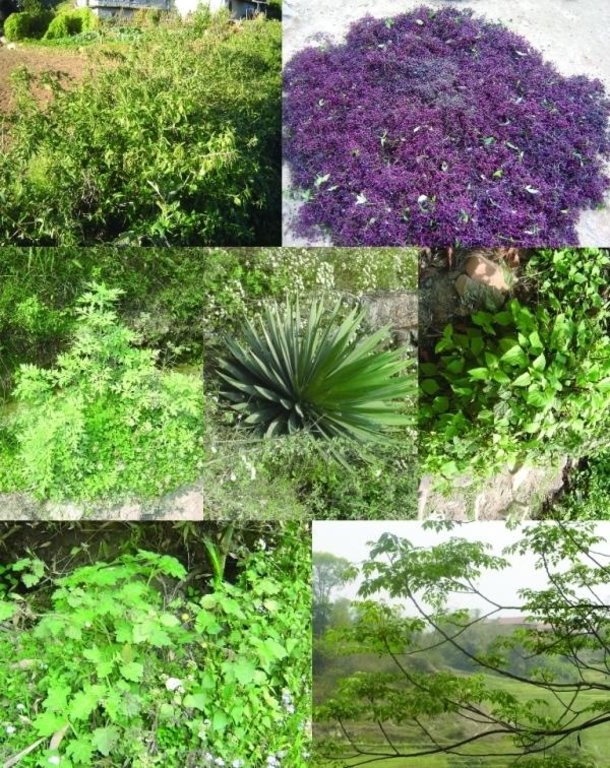Organic pest management [Непал]
- Создание:
- Обновить:
- Составитель: Richard Allen
- Редактор: –
- Рецензент: David Streiff
Jaibik rogkira byabasthapan (Nepali)
technologies_1755 - Непал
Просмотреть разделы
Развернуть все Свернуть все1. Общая информация
1.2 Контактные данные специалистов и организаций, участвующих в описании и оценке Технологии
Специалист по УЗП:
Director
+977 1 5520314
Soil Management Directorate, Department of Agriculture
Непал
Специалист по УЗП:
Team Leader
+977 1 5543591
ssmp@helvetas.org.np
Sustainable Soil Management Programme
Непал
Название проекта, содействовавшего документированию/оценке Технологии (если применимо)
Sustainable Soil Management Programme, Nepal (SSMP)Название организации (-ий), содействовавших документированию/оценке Технологии (если применимо)
Department of Agriculture, Soil Management Directorate, Hariharbhawan Lalitpur (doasoil) - НепалНазвание организации (-ий), содействовавших документированию/оценке Технологии (если применимо)
HELVETAS (Swiss Intercooperation)1.3 Условия, регламентирующие использование данных, собранных ВОКАТ
Когда были собраны данные (на местах)?
06/11/2008
Составитель и ответственный(-ые) специалист(-ы) согласны с условиями, регламентирующими использование собранных ВОКАТ данных:
Да
1.5 Ссылка на Анкету (-ы) по Подходам УЗП

Farmer field schools on integrated plant nutrient systems [Непал]
Participatory and collaborative learning through the farmer field school approach
- Составитель: Richard Allen

Farmer-led experimentation [Непал]
Participatory technology testing and adaptation through farmer-led experiments
- Составитель: Richard Allen

Farmer-to-farmer diffusion [Непал]
Wider diffusion of sustainable soil management technologies through a demand responsive farmer-to-farmer diffusion approach
- Составитель: Richard Allen
2. Описание Технологии УЗП
2.1 Краткое описание Технологии
Определение Технологии:
Promotion of botanical pesticides for organic pest management and liquid manure
2.2 Подробное описание Технологии
Описание:
Production of fresh vegetable is often hampered by pests which may reduce production and badly affect farmers’ income. Chemical pesticides are available and are used, sometimes excessively, to combat these pests in parts of Nepal’s midhills. Botanical pesticides prepared from a variety of plant ingredients soaked and fermented in cattle urine provide a suitable alternative to chemical pesticides, at least for subsistence and semi-commercial vegetable producers. These pesticides are based on farmer’s traditional knowledge and are emerging as alternatives to the
application of chemical pesticides.
All the ingredients for these pesticides are available locally; in some cases the plants are considered as weeds. Crofton weed (banmara) grows in abundance along roads and paths, and on forest floors and suppresses the growth of other more valuable species. It is believed to have pesticidal effects and is often used in botanical pesticides. The Nepali names of other plants commonly used in the tonics are asuro (malabara tree), titepati (mugwort), bakaino (Persian lilac), timur (Nepali pepper), patina (field mint), tulsi (sweet basil), neem, sisnu (stinging nettle), ketuke
(century plant), and khirro (tallow tree). In general it is said that herbs and plants that are bitter, pungent, or ‘hot’ or that produce a strong odour are most effective in botanical pesticides.
The botanical pesticide is diluted with water before applying to vegetable crops. The dilution ratio depends on the age and type of the plant being treated with a higher dilution for seedlings in nurseries than for mature plants. While botanical pesticides do not kill all pests, they do combat soft-bodied insects such as aphids and act as a repellent against larger insects like cutworms, various larvae, and red ants. They are not usually effective against plant diseases.
In some places innovative farmers have started to produce and sell botanical pesticides for pest management and as a liquid manure for foliar application.
2.3 Фотографии, иллюстрирующие Технологию
2.5 Страна/ регион/ места, где применяется Технология, информация о которых собрана в данной Анкете
Страна:
Непал
Более точная привязка места:
Midhills districts of Nepal
Map
×3. Классификация Технологии УЗП
3.1 Основные цели и задачи реализации Технологии
- Cheaper pest management
3.2 Текущий(-ие) тип(-ы) землепользования на территории, где применяется Технология

Пахотные угодья и плантации
- Однолетние культуры
Пояснения:
Major land use problems (compiler’s opinion): Intensifying cultivation practices and the increasing demand for fresh and off-season vegetables have increased the
incidence of pests. These pests are controlled mainly by chemical pesticides where available, and where they are not
available entire crops can be destroyed and farmers’ livelihoods endangered.
3.4 Категория УЗП, к которой относится Технология
- Комплексная борьба с сельскохозяйственными вредителями и болезнями (включая органическое сельское хозяйство)
3.5 Распределение Технологии по площади
Охарактеризуйте пространственное распространение Технологии :
- равномерно-однородное применение на определенной площади
3.6 Мероприятия УЗП, выполняемые в рамках Технологии

управленческие мероприятия
- У7: Другие
3.7 Основные проблемы деградации земель, на решение которых направлена Технология

ухудшение химических свойств почв
- Хп: Снижение плодородия и уменьшение содержания органического вещества (вызванное не эрозией, а другими причинами)
3.8 Предотвращение и снижение деградации земель, или восстановление нарушенных земель
Укажите цель Технологии по отношению к деградации земель :
- снижение деградации земель
4. Технические характеристики, мероприятия по практической реализации, вложения и стоимость
4.2 Спецификация / пояснения к техническому рисунку
Technical knowledge required for field staff / advisors: low
Technical knowledge required for land users: low
Main technical functions: reduction in application of chemical pesticides, reduction in application of chemicalfertilisers
Secondary technical functions: supplementary irrigation
4.3 Общая информация по необходимым вложениям и стоимости
Уточните, как рассчитывались затраты и вложения:
- на площадь, где применяется Технология
Укажите денежные единицы, использованные для подсчета затрат:
- Доллары США
Укажите среднюю дневную заработную плату наемных работников:
2.00
4.4 Мероприятия, необходимые для начала реализации
| Деятельность | Тип мероприятия | Сроки | |
|---|---|---|---|
| 1. | Different plants with pesticidal properties are collected and chopped into small pieces. Only tenderparts should be used to facilitate decomposition. | Управленческие | |
| 2. | Other materials like ginger powder, green chilli, ash, and mustard cake are mixed with the chopped plant material | Управленческие | |
| 3. | The material is placed in a plastic drum or earthen pot and soaked in cattle urine at the rate of about one kilogramme of solid material per 2 litres of cattle urine. | Управленческие | |
| 4. | The drum is close as air-tight as possible and put in a shady place. | Управленческие |
4.5 Вложения и затраты, необходимые для начала реализации
| Опишите затраты | Единица | Количество | Затраты на единицу | Общая стоимость на единицу | % затрат, оплаченных землепользователями | |
|---|---|---|---|---|---|---|
| Оплата труда | Labour | Persons/day | 2,0 | 2,0 | 4,0 | 100,0 |
| Оборудование | Drum | pieces | 1,0 | 6,0 | 6,0 | 100,0 |
| Общая стоимость запуска Технологии | 10,0 | |||||
4.6 Поддержание/ текущее обслуживание
| Деятельность | Тип мероприятия | Сроки/ повторяемость проведения | |
|---|---|---|---|
| 1. | The botanical pesticide needs to be stirred with a wooden stick about every 15 days. | Управленческие | |
| 2. | The prepared pesticide is normally ready for field application after about 35-40 days of fermentation/preservation. | Управленческие | |
| 3. | The pesticide is diluted with water 1:4 (1 part pesticide solution: 4 parts water) for mature plants and 1:8 for nurseries and applied with a jug, sprayer, or broom. | Управленческие |
4.7 Стоимость поддержания/ текущего обслуживания ( в год)
Пояснения:
Cost as in January 2007
5. Природные и социально-экономические условия
5.1 Климат
Среднегодовое количество осадков
- < 250 мм
- 251-500 мм
- 501-750 мм
- 751-1000 мм
- 1001-1500 мм
- 1501-2000 мм
- 2001-3000 мм
- 3001-4000 мм
- > 4000 мм
Пояснения/ комментарии по осадкам:
Annual rainfall: Also 2000-3000 mm
Агроклиматическая зона
- влажная
Thermal climate class: subtropics
5.2 Рельеф
Склоны (преобладающие):
- пологие (0-2%)
- покатые (3-5%)
- покато-крутые (6-10%)
- крутые (11-15%)
- очень крутые (16-30%)
- чрезвычайно крутые (31-60%)
- обрывистые (>60%)
Формы рельефа:
- плато/ равнины
- гребни хребтов/холмов
- склоны гор
- склоны холмов
- подножья
- днища долин
Зона высотной поясности:
- 0-100 м над уровнем моря
- 101-500 м н.у.м.
- 501-1000 м н.у.м.
- 1001-1500 м н.у.м.
- 1501-2000 м н.у.м.
- 2001-2500 м н.у.м.
- 2501-3000 м н.у.м.
- 3001-4000 м н.у.м.
- > 4 тыс. м н.у.м.
Комментарии и дополнительные сведения по условиям рельефа/ топографии :
Slopes on average: Also moderate (6-10%), rolling (11-15%) and hilly (16-30%)
Landforms: Also footslopes
Altitudinal zone: Also 1000-1500 m a.s.l., 1500-2000 m a.s.l. and 2000-2500 m a.s.l.
5.6 Характеристика землепользователей, применяющих Технологию
Рыночная ориентация производства:
- смешанное (самообеспечение/ товарное хозяйство
Индивидуальное или коллективное хозяйство:
- частное/ домовладение
Укажите другие важные характеристики землепользователей:
Off-farm income specification: In most farm households off-farm income plays at least a minor and increasingly a major role. Occasional opportunities for off-farm income present themselves in the form of daily labour wages. Some households’ members receive regular salaries whilst an increasing number of Nepalis are working in India, the Middle East, Malaysia and elsewhere and sending remittance incomes home.
5.7 Средний размер земельных участков, арендуемых или находящихся в собственности землепользователей, применяющих Технологию
- < 0,5 га
- 0,5-1 га
- 1-2 га
- 2-5 га
- 5-15 га
- 15-50 га
- 50-100 га
- 100-500 га
- 500-1000 га
- 1000-10000 га
- > 10000 га
5.8 Собственность на землю, права на земле- и водопользование
Землевладелец:
- индивидуальная, не оформленная в собственность
- индивидуальная, оформленная в собственность
Право землепользования:
- аренда
- индивидуальное
Пояснения:
Sharecropping between owner and tenant
6. Воздействия и заключительные положения
6.1 Влияние Технологии УЗП в пределах территории ее применения
Социально-экономическое воздействие
Доходы и затраты
сельскохозяйственные издержки
объем работ
Комментарий/ пояснения:
Labor- intensive preparation of botanical pesticides. Need to be prepared fresh for each crop, therefore demanding labor often at inconvenient times
Другое социально-экономическое воздействие
Pest incedence and destruction of crops
Crop health
Комментарий/ пояснения:
due to additional fertilizer
Organicproduction of crops
Социальное и культурное воздействие
Social prestige as use shows user to be a progressive farmer
Acceptance of the fertilizer
Комментарий/ пояснения:
May not be accepted due to urine in the mixture ( especially if human urine is used)
Экологическое воздействие
Другие экологические последствия
Application of agrochemcals
Soil biology health
6.2 Влияние Технологии за пределами территории ее применения
загрязнение подземных/ речных вод
Комментарий/ пояснения:
Reduction of chemical pesticide contamination of water bodies
Dependence on oncostly external inputs
6.4 Анализ эффективности затрат
Насколько получаемый результат сопоставим с первоначальными вложениями (с точки зрения землепользователей)?
Эффективность затрат в краткосрочной перспективе:
позитивное
Эффективность затрат в долгосрочной перспективе:
позитивное
Насколько получаемый результат сопоставим с текущими расходами по поддержанию технологии (с точки зрения землепользователей)?
Эффективность затрат в краткосрочной перспективе:
позитивное
Эффективность затрат в долгосрочной перспективе:
позитивное
6.5 Внедрение Технологии
Пояснения:
Comments on spontaneous adoption: It is adopted by small to medium scale, 50% of SSMP trained/organised groups and 10% of local farmers from outside the SSMP groups were using the technology.
6.7 Сильные стороны/ преимущества/ возможности Технологии
| Сильные стороны/ преимущества/ возможности по мнению составителя или других ключевых специалистов |
|---|
|
Organic pest management using botanical pesticides reduce the expense of pest control How can they be sustained / enhanced? Further promote the benefits of organic pest management |
|
Organic pest management reduces the negative impact of chemical pesticides How can they be sustained / enhanced? Further promote the benefits of organic pest management |
6.8 Слабые стороны/ недостатки/ риски Технологии и пути их преодоления
| Слабые стороны/ недостатки/ риски по мнению составителя или ответственных специалистов | Возможные пути их преодоления/снижения? |
|---|---|
| Labour intensive preparation often at inconvenient times as the botanical pesticide has to be prepared fresh for each crop and can only be stored for a limited amount of time | Develop methods that reduce labour requirements and highlight possibilities for bulk production and adequate storage without losing effectiveness |
| The reagents that are effective in the botanical pesticides have not been identified |
Carry out applied research into the different reagents and their effect on different pests |
| The botanical pesticides are not effective against all pests | Carry out applied research into and document the effects of different botanical pesticides on different pests |
7. Справочные материалы и ссылки
7.2 Ссылки на опубликованные материалы
Название, автор, год публикации, ISBN:
Neupane, F.P. (2056 BS - 1999/2000) Insect Control by Herbs. Kathmandu: Sajha Publications
Где опубликовано? Стоимость?
SSMP
Название, автор, год публикации, ISBN:
Several pamphlets on different tonal tonic compositions are available in Nepali from SSMP
Где опубликовано? Стоимость?
SSMP
Ссылки и модули
Развернуть все Свернуть всеСсылки

Farmer field schools on integrated plant nutrient systems [Непал]
Participatory and collaborative learning through the farmer field school approach
- Составитель: Richard Allen

Farmer-led experimentation [Непал]
Participatory technology testing and adaptation through farmer-led experiments
- Составитель: Richard Allen

Farmer-to-farmer diffusion [Непал]
Wider diffusion of sustainable soil management technologies through a demand responsive farmer-to-farmer diffusion approach
- Составитель: Richard Allen
Модули
Нет модулей





